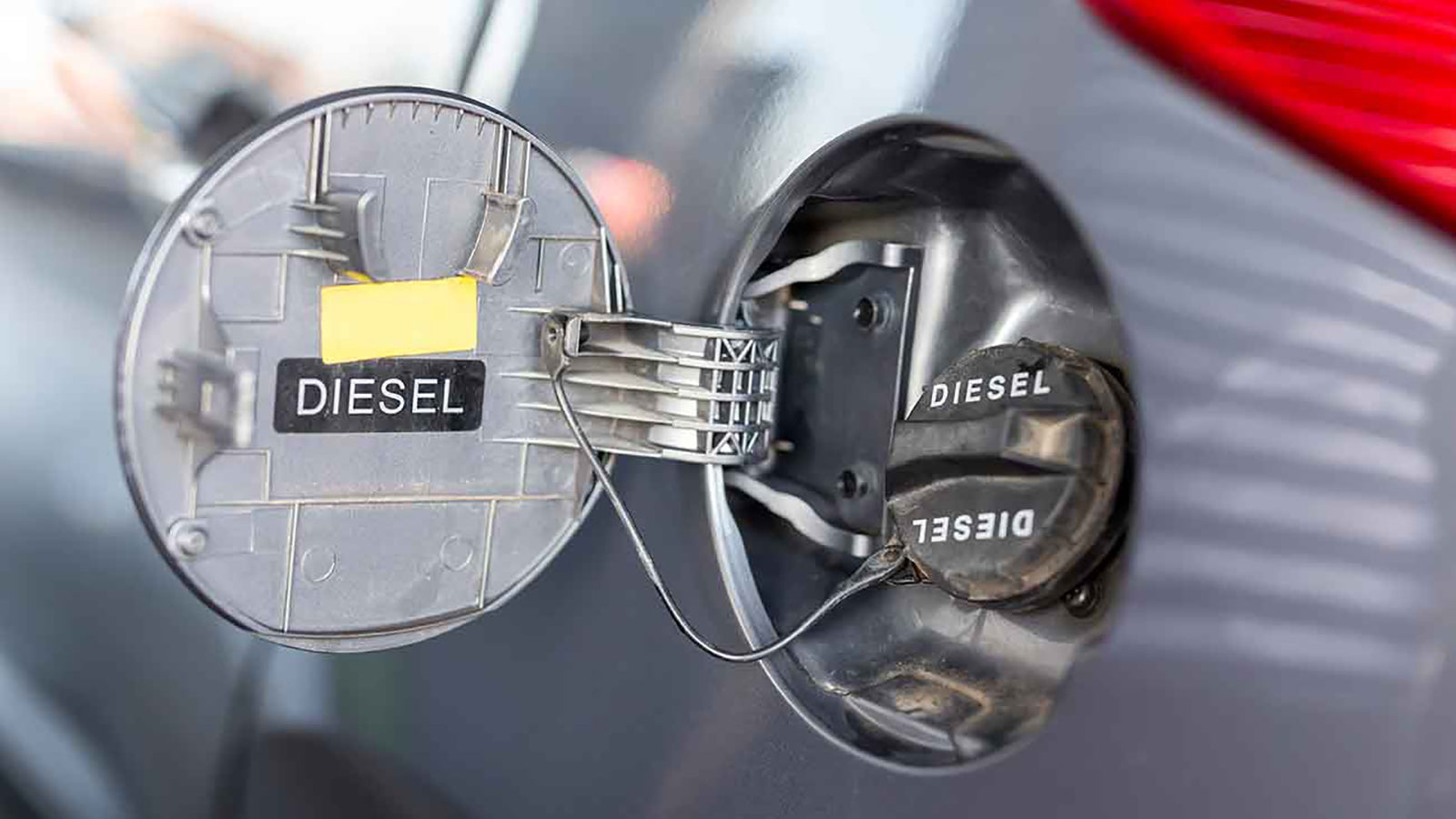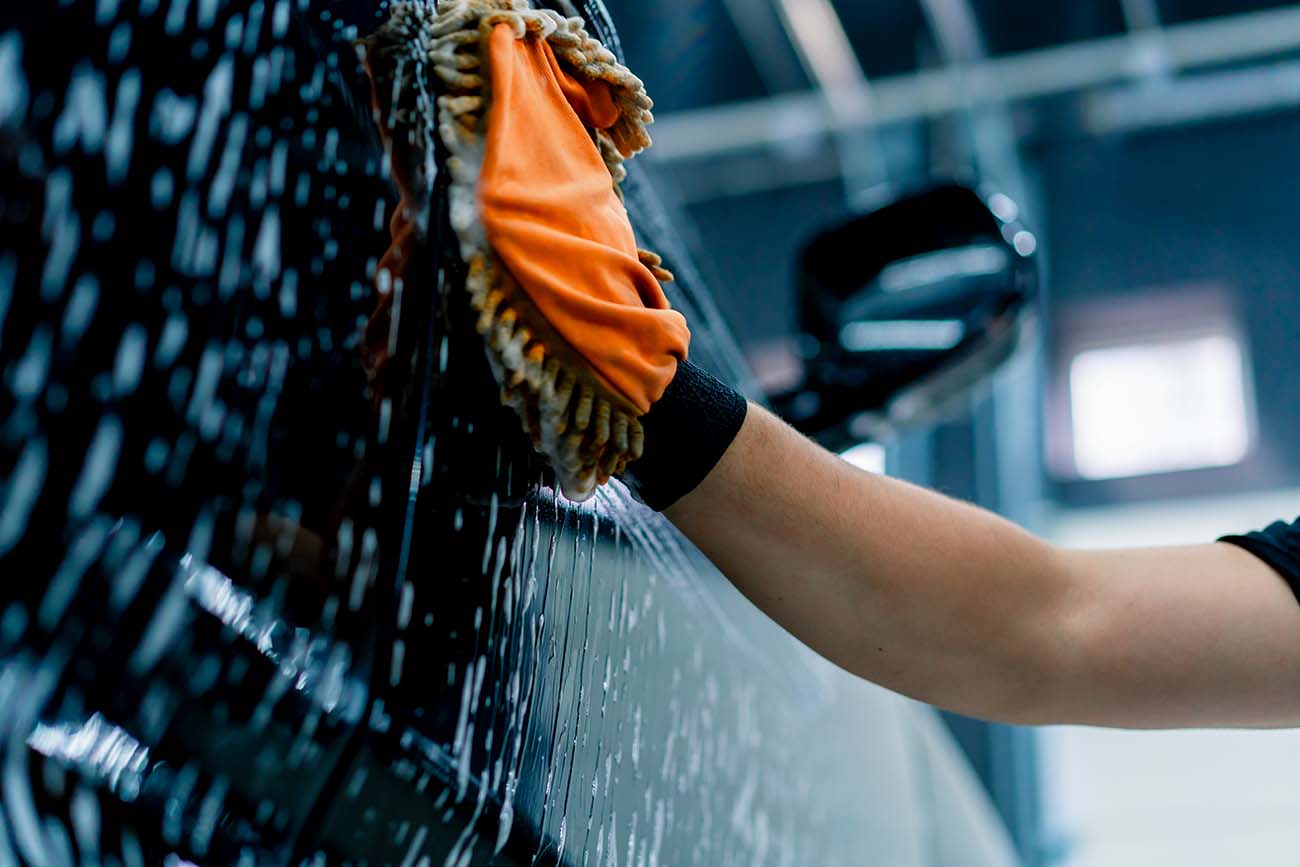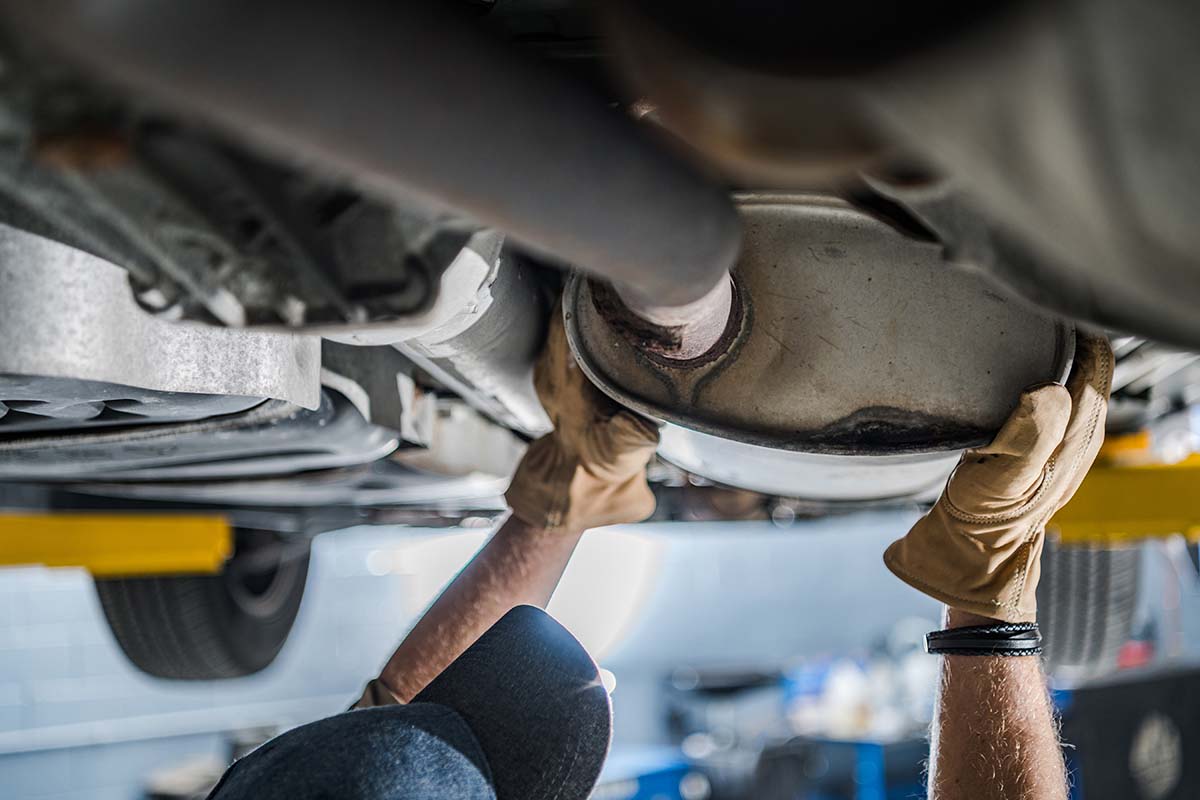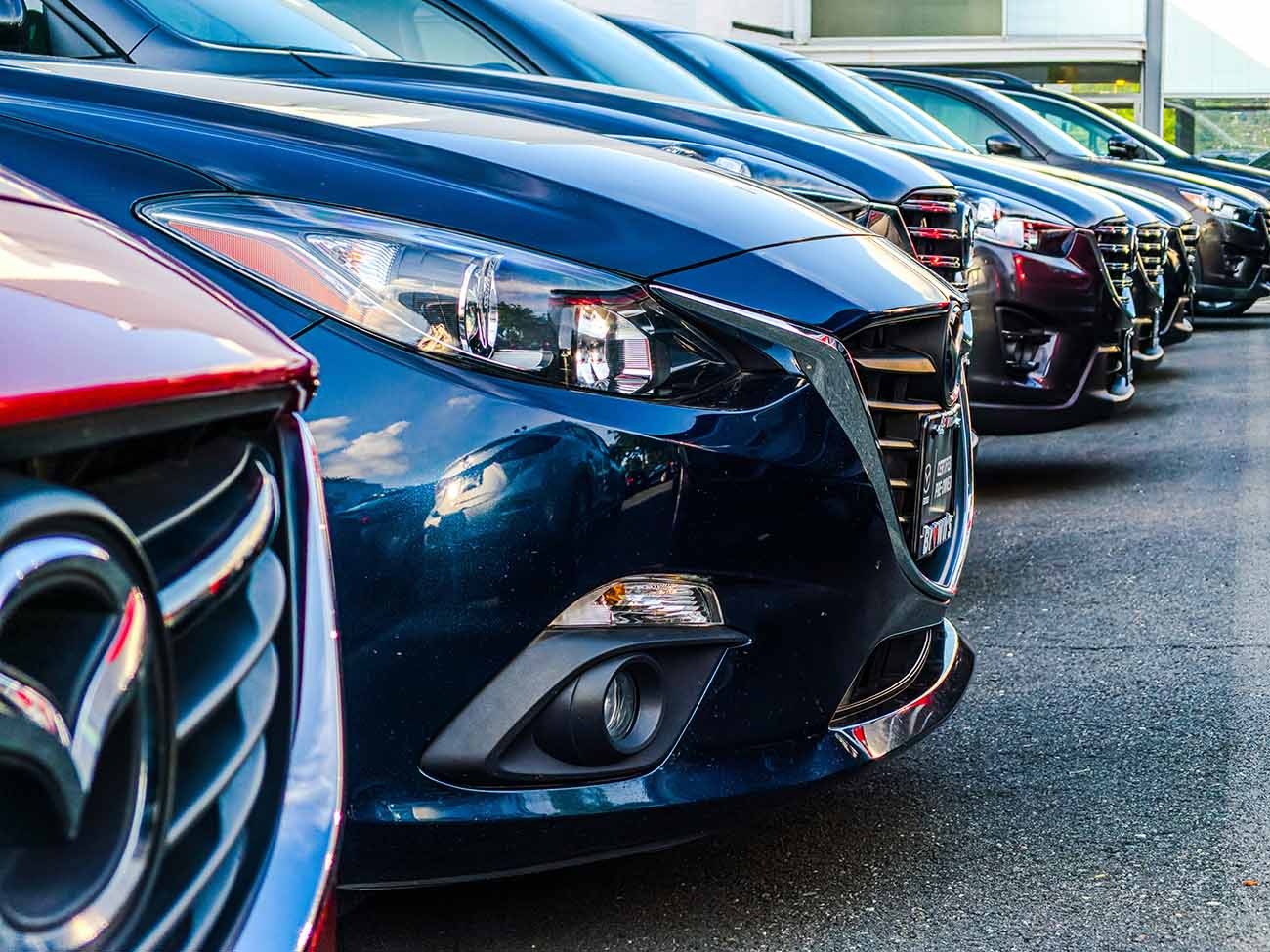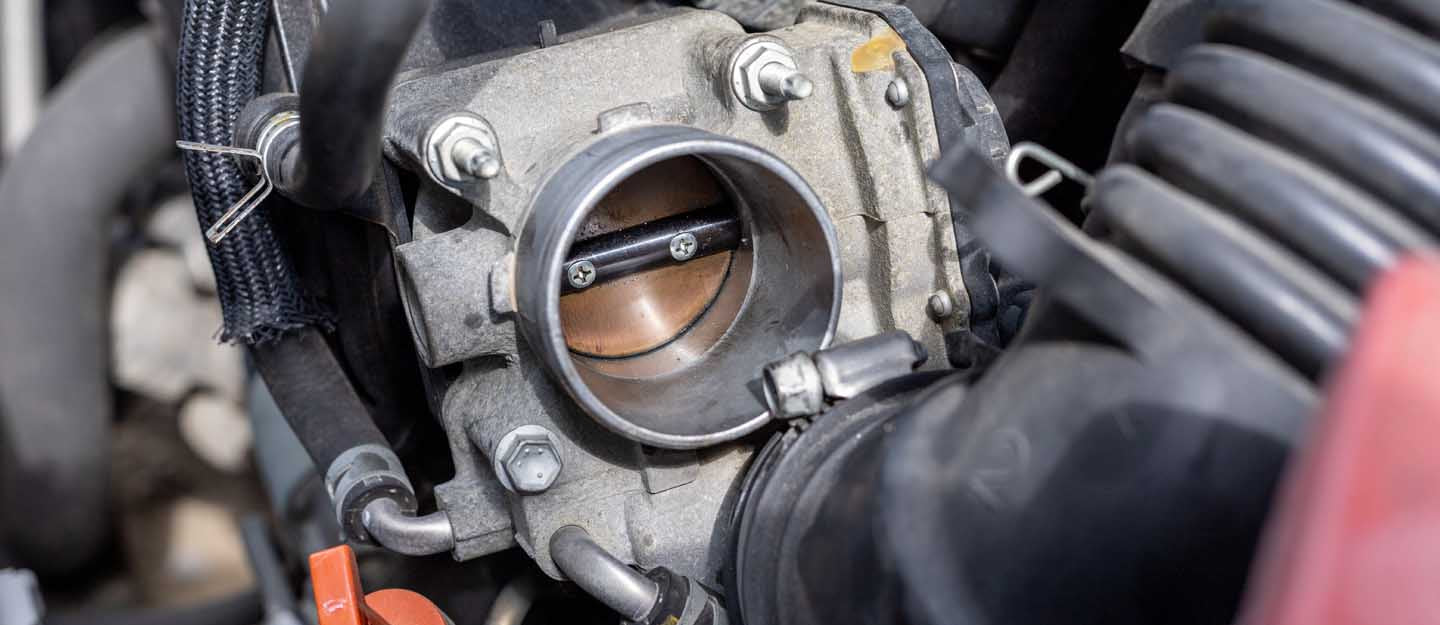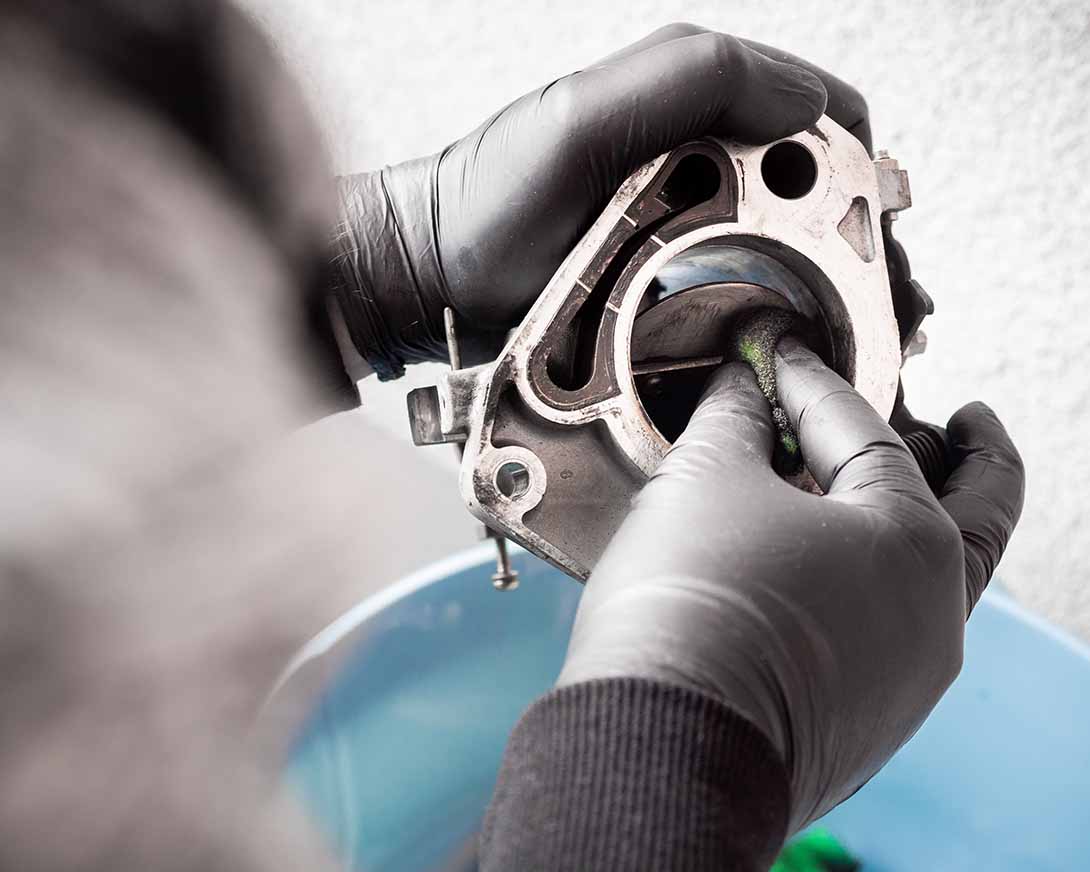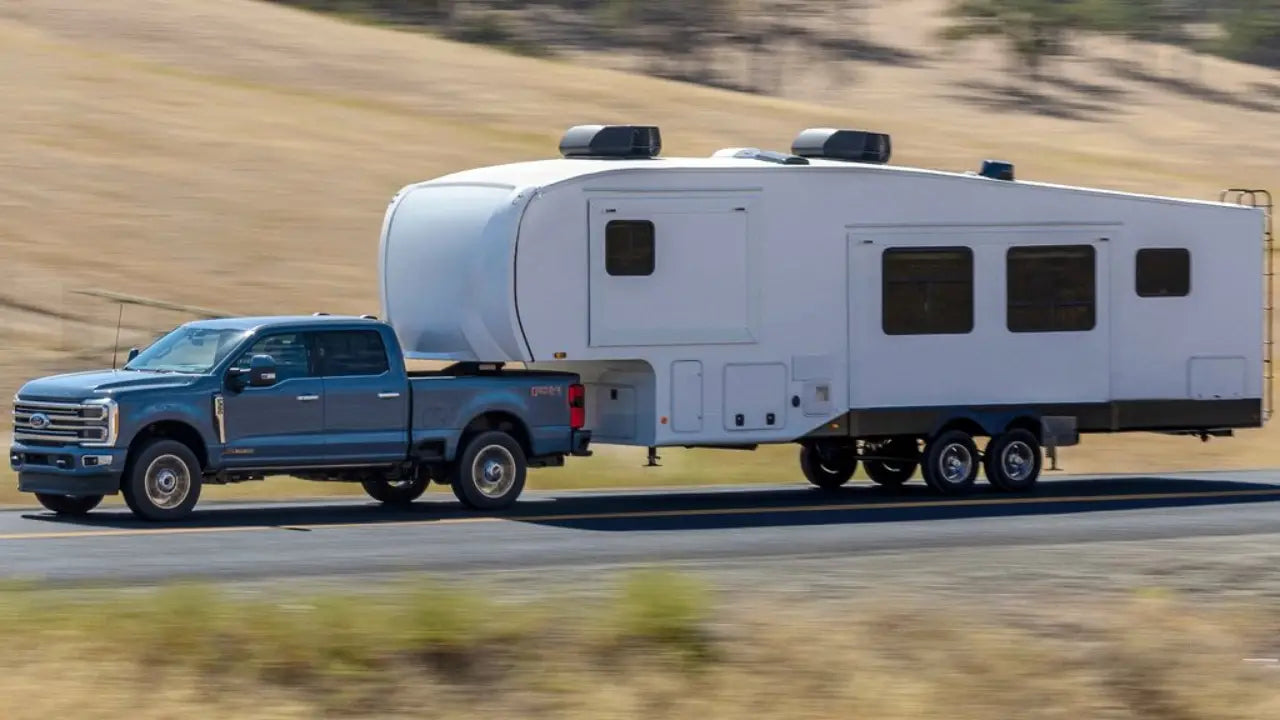Restomod 101: Upgrading Vintage Cars for Today's Roads
Cansu ErdalShare
The automotive world is filled with enthusiasts passionate about classic cars, appreciating their timeless designs and historical significance. As technology advances, the appeal of vintage or classic cars often needs to match modern performance standards and convenience features. At this point, restomods have emerged as a fascinating niche within the automotive world.
In this article, we will answer the most popular FAQs about restomod to offer a detailed guide to restomod. Here, you will also learn how restomod prepares vintage cars for today’s roads. So, if you want to obtain specific and detailed information about restomod and restomod cars, just keep reading till the end.

What is a Restomod?
What Does Restomod Mean? Restomod is a portmanteau of two words: “restoration” and “modification,” so it refers to the process of restoring a classic or vintage car to its original appearance vehicle, incorporating modern components and technology to enhance its performance, comfort, and reliability. So, one of the defining characteristics of a restomod is its commitment to preserving the essence of the original design while integrating modern upgrades and enhancements.
What is a Restomod Car?
A restomod car is a classic or vintage car with a comprehensive restoration and modification process. Unlike traditional restoration that aims to preserve a vehicle’s factory-original condition, restomod cars involve modern components and technologies like electronic fuel injectors, performance brakes, advanced suspension systems, state-of-art infotainment systems, safety features, modern powertrains, etc. Thus, restomod cars are ready for today’s road by celebrating their vintage heritage and embracing modern car components.

What is the difference between a Car Restoration and a Restomod Car?
Car restoration involves returning a vehicle to its original factory condition, emphasizing historical accuracy and authenticity. This process typically includes repairing or replacing worn-out car components with OEM or aftermarket parts. On the other hand, restomod cars take a more innovative approach to customization. While they have also undergone restoration, the main focus is on enhancing performance, comfort, and reliability by integrating advanced components.
What is the difference between Hot Rod and Restomod?
The difference between a hot rod and a restomod lies in their approach to customization, the extent of modifications made to the vehicle, and their aesthetic preferences. A hot rod is a heavily modified or custom-built vehicle, often based on a classic or vintage model. More specifically, hot rods are characterized by their distinctive appearance, which may include chopped roofs, aggressive body modifications, custom paint jobs, etc.
In contrast, a Restomod car retains more of the original vehicle's appearance while incorporating advanced upgrades like modern powertrains, transmissions, brakes, suspension systems, and interior amenities, blending classic aesthetics. Unlike hot rods, Restomods aim to balance vintage style and modern performance, often appealing to enthusiasts who appreciate classic cars' heritage and functionality.
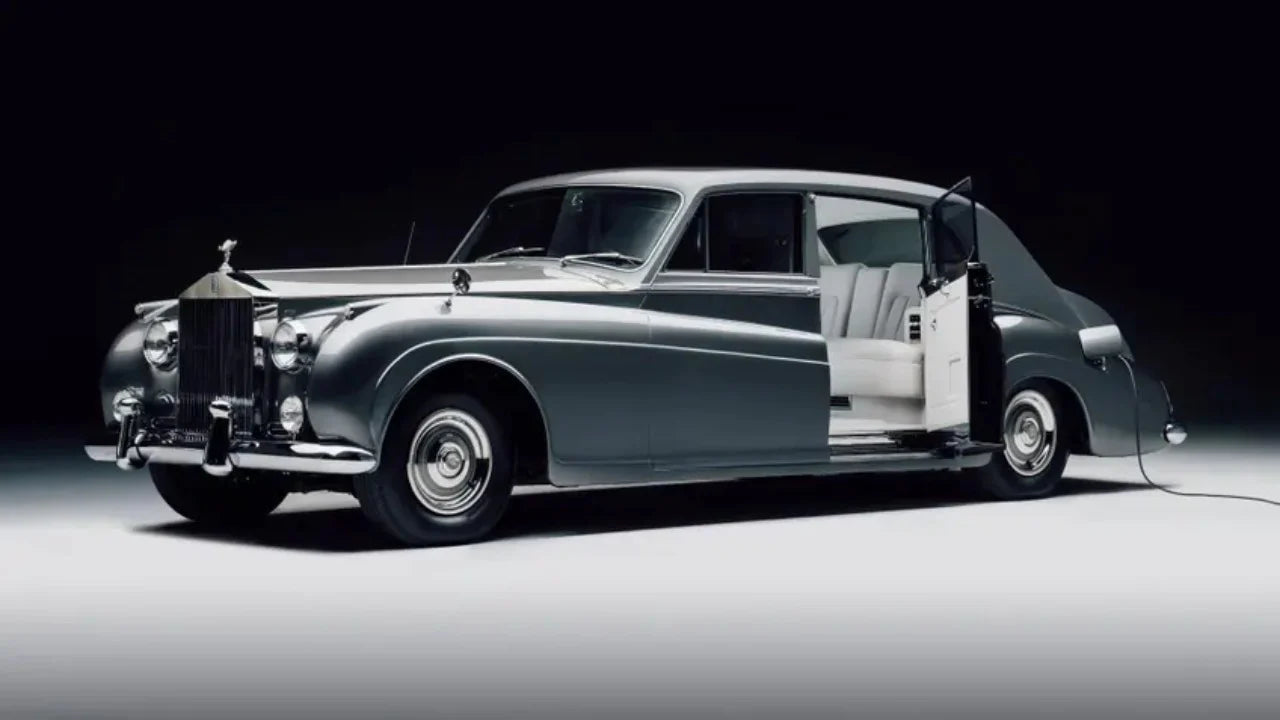
What is the difference between Pro-touring and Restomod?
Even though both pro-touring and restomod focus on modifying older cars, the difference between pro-touring and restomod lies in their primary focus, driving characteristics, and overall car customization. Pro-touring builds prioritize high-performance driving, focusing on track-inspired modifications like upgraded suspension and brakes for optimal handling and acceleration rather than preserving the vehicle’s nostalgic appearance. On the other hand, restomod builds keep the nostalgic charm of the base vehicle while incorporating modern components.
What are the Key Steps of Restomod?
The restomod project requires systematically transforming a classic vehicle into a modernized masterpiece. Here are the critical steps of the restomod process:

- Planning and Research: The restomod project requires detailed planning and research in which you should define your goals, research certain performance upgrades or related car components, and determine a budget and timeline.
- Perfect Donor Vehicle: One of the most critical steps of a restomod project is selecting an ideal vehicle. So, conduct a thorough inspection to ensure it meets your requirements and goals for your restomod project.
- Bodywork: Before restomod, you must address any imperfections. Apply primer, paint, and clear coat to achieve a flawless finish that captures the essence of your vision.
- Powertrain: It is crucial to install the engine, transmission, drivetrain, and exhaust system. At this point, ensure these parts fit seamlessly into each other and the donor vehicle.
- Performance Upgrades: This step ensures your restomod car’s performance and handling. Upgrading suspension components, reinforcing the chassis, and installing brakes, wheels, and tires are necessary for the restomod project.
- Interior Refinement: Restomod car deserves upgraded seats, upholstery, and modern amenities such as air conditioning and sound systems. When it comes to interior refinement, you should pay more attention to preserving the vintage vehicle’s original charm.
- Electrical and Electronics Integration: It is crucial to ensure modern electrical systems' wiring and electronic components' integration for optimal functionality and reliability.
- Final Assembly and Testing: As the restomod project nears completion, the process of final assembly and testing ensues, where the restomod car is reassembled, subjected to rigorous testing, and any necessary adjustments made to ensure peak performance.
Is Restomod Legit?
Yes, restomod is a legitimate and respected modification type that celebrates automotive heritage while embracing modern technology and customization techniques. However, it is essential to approach restomod projects with careful planning, realistic expectations, and attention to detail to mitigate potential challenges and ensure a successful outcome. So, consulting with experienced professionals and conducting thorough research can help minimize restomod risks and maximize the enjoyment of restomodding a car.
What are the Pros and Cons of Restomod?
There are many pros and cons of restomod compared to an ordinary car modification. So, here is a detailed overview of the pros and cons of restomod:
Pros of Restomod
- Heritage Preservation: Restomods offer classic cars' timeless aesthetics and nostalgic appearance, appealing to enthusiasts who appreciate vintage design. Restomods also preserve automotive heritage by revitalizing classic cars and keeping them on the road for future generations.
- Modern Performance: By integrating modern engines, suspension systems, brakes, and other components, restomods can deliver improved performance and driving dynamics compared to their predecessors.
- Exclusivity: Many restomods are one of a kind or produced in limited quantities, which makes them unique and potentially more valuable as collector’s items.
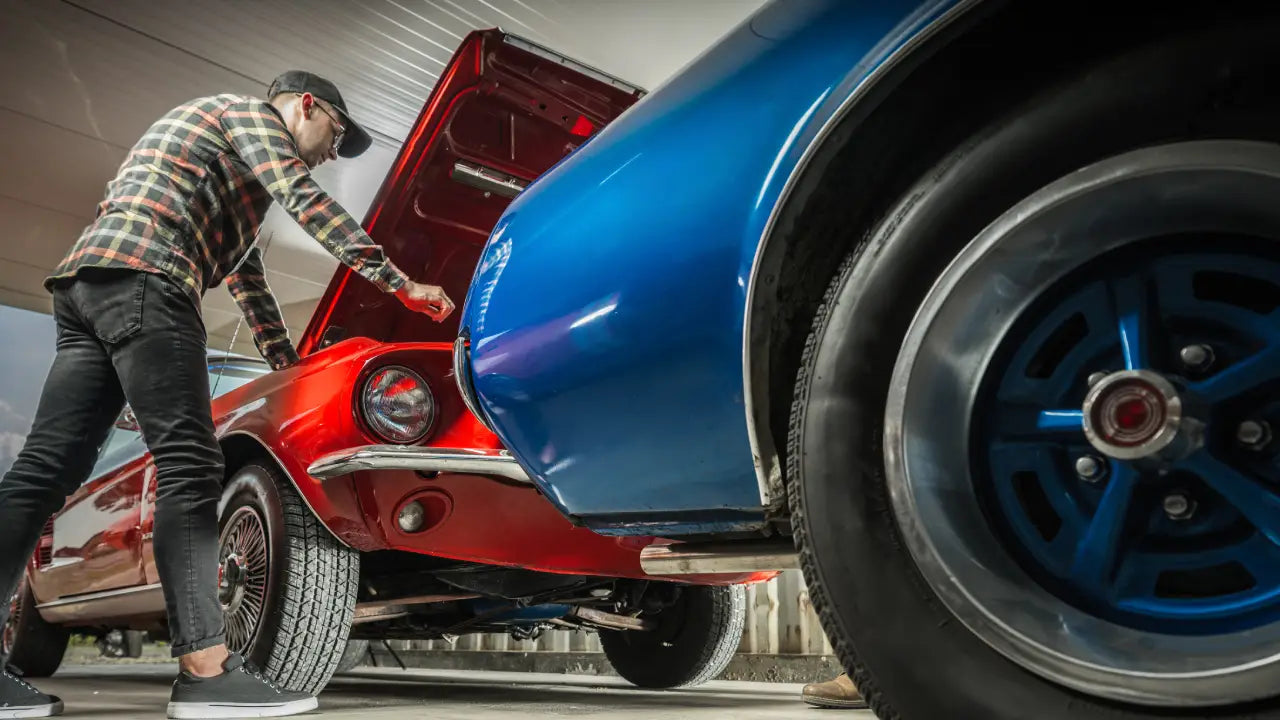
Cons of restomod
- Cost: The restomods can sometimes exceed the price of a brand-new modern car. High-quality components, labor-intensive customization, and unforeseen contribute to the overall expense.
- Compatibility Challenges: Restomods require integrating modern components with older systems and structures in classic or vintage cars. For example, modern drivetrains cannot fit within the confines of a classic car’s engine bay, requiring enough space, mounting points, and structural integrity. This situation also leads to difficulty in finding the right quality and necessary parts.
- Time Investment: Sourcing necessary car parts for a restomod project can be time-consuming because it requires extensive research, communication with suppliers, and multiple attempts to find suitable components.
How much does a Restomod Cost?
The cost of a restomod project can vary widely depending on several factors such as the vehicle’s make and model, the level of customization desired, the quality of aftermarket parts used, and whether any specialized labor is required. Generally, a basic restomod project might start at around $30.000 to $50.000, while more extensive or high-end restomod projects can easily surpass $100.000 or even reach several hundred thousand dollars.
![]()
Do Restomod Cars Require Special Maintenance?
Yes, restomod cars may require special maintenance considerations due to the blend of classic and modern components. Here are some critical maintenance for a restomod car:
- Regular Maintenance: Like any vehicle, restomod cars require routine maintenance such as oil changes, fluid checks, brake inspections, and tire rotations.
- Performance Upgrades: Restomod cars often incorporate modern advanced performance parts such as high-performance engines, upgraded suspension systems, superchargers, and electronic systems. These performance parts require specialized maintenance procedures.
- Vintage Components: While restomod cars include modern upgrades, they still retain some vintage components like the body, interior, and trim. These classic parts require special care and maintenance to preserve their appearance and functionality over time.
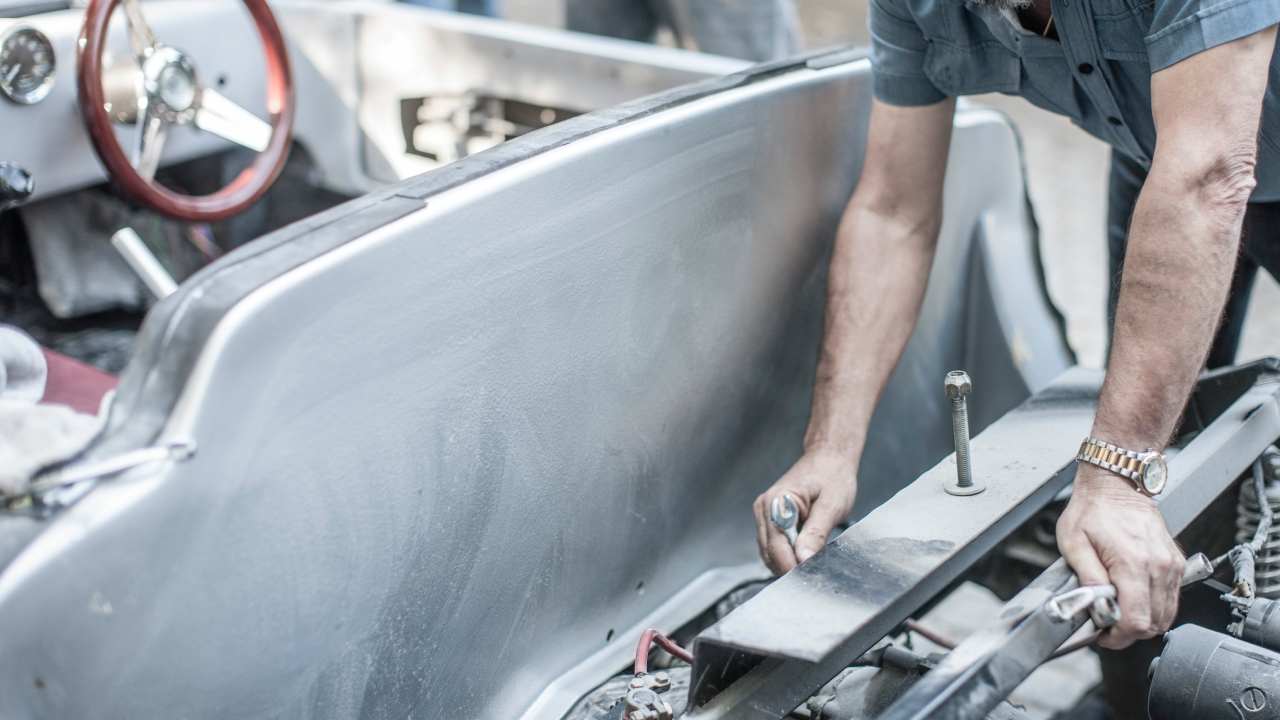
Are Restomod Cars Reliable?
The reliability of restomod cars is a multifaceted aspect influenced by various factors. At its core, the reliability of a restomod car hinges heavily on the right donor vehicle, high-quality components, and skilled professionals. When these experts pay attention to the details, ensuring that all components are installed correctly and that the restomod car’s systems function properly, reliability is provided.
However, there are inherent risks associated with restomodding, particularly if the work is not executed to a high standard. Poorly executed modifications may lead to serious issues such as electrical gremlins, mechanical failures, or drivability problems, which can undermine the overall reliability of the restomod.
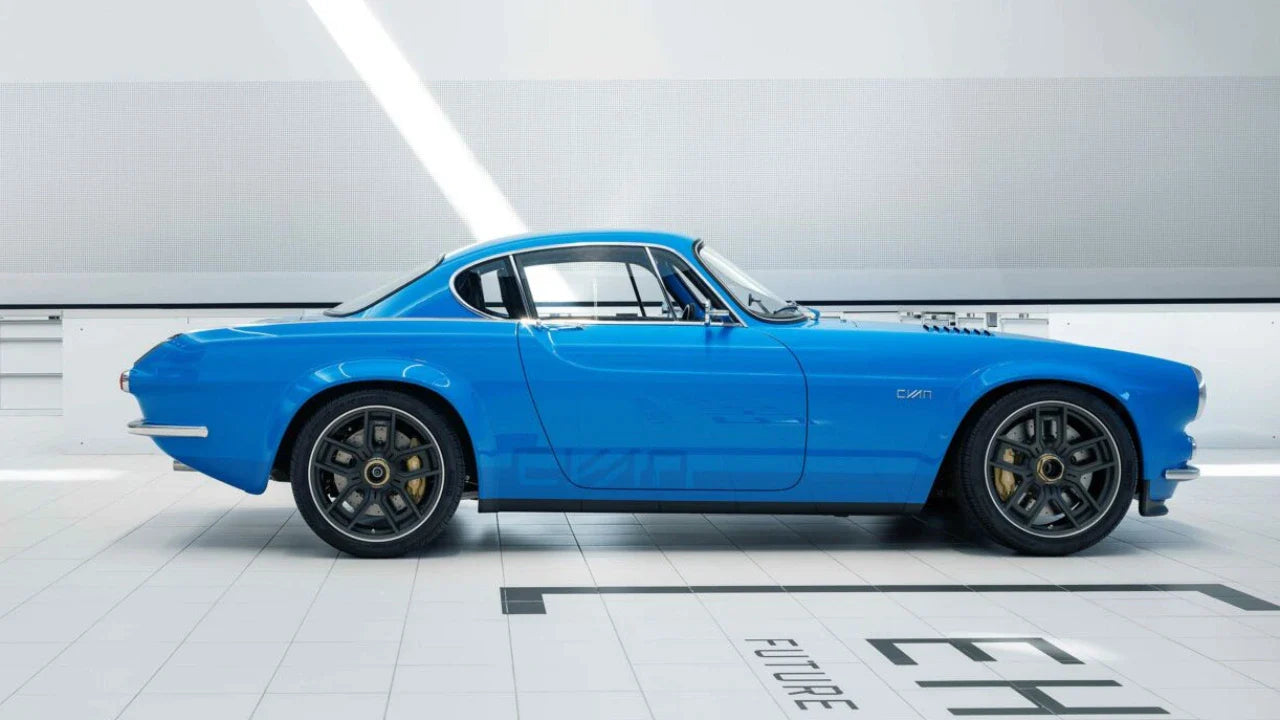
So, the reliability of a restomod car is a combination of the craftsmanship of the builders, the quality of the components used, and the level of care and maintenance given to the restomod car by its owner. With proper attention to detail and regular maintenance, a well-executed restomod can offer reliability comparable to or surpassing its original counterpart, providing years of enjoyable driving experiences.
Do Restomod Cars Retain Their Value?
Restomod cars can retain their value well if they are tastefully done, use high-quality components, and are executed by reputable builders. Factors such as the base car's originality, the modifications' quality, and the current market demand for such vehicles also play significant roles in determining their resale value. Ultimately, like any customized vehicle, individual tastes and preferences will influence the perceived value of restomod cars. Hence, it's essential to research and consider the specific characteristics of each restomod when assessing its potential for retaining value.
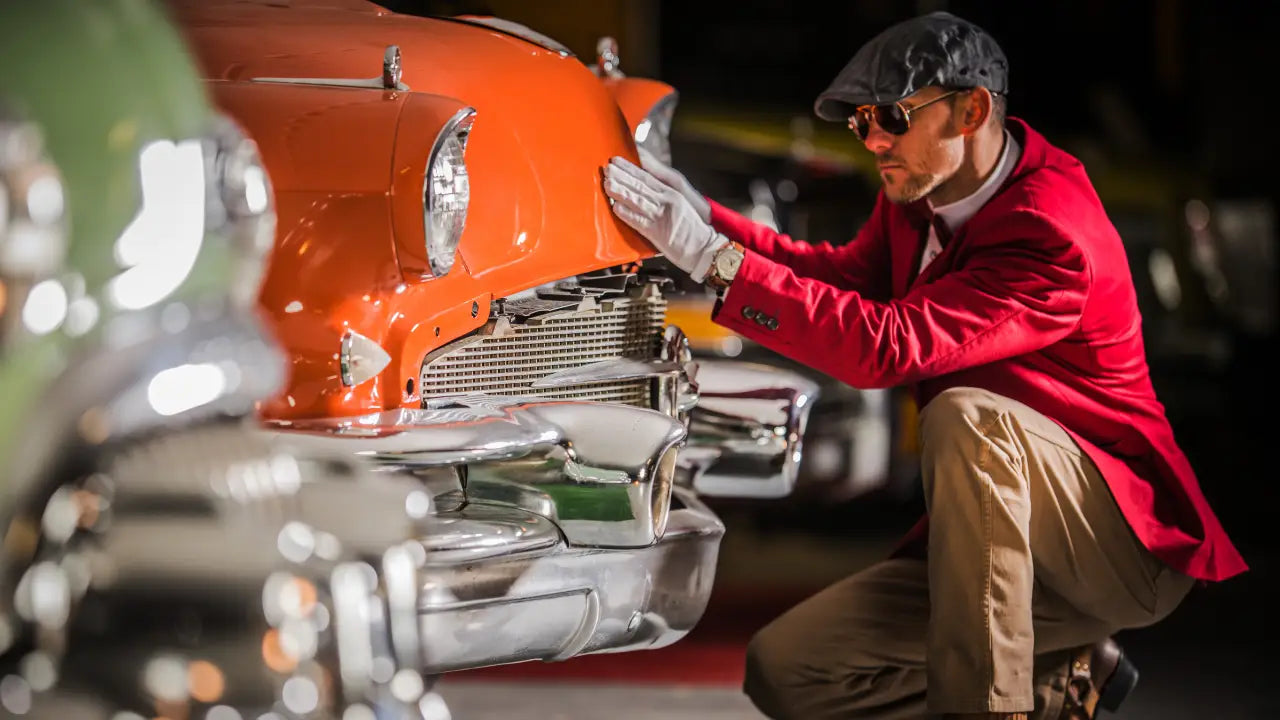
What are Some Popular Restomod Cars?
Several popular restomod cars have gained recognition and admiration among enthusiasts for their blend of classic styling with modern performance and technology. Let’s look at some of the popular restomod cars below:
1965 Ford Mustang Restomod
The 1965 Ford Mustang restomod combines vintage aesthetics and modern engineering. The Mustang's drivetrain is upgraded with a modern fuel-injected engine and transmission, which provides exhilarating performance and improved fuel efficiency. Under the hood, a custom-built V8 engine delivers exhilarating power and torque. Also, the suspension of the Mustang is re-engineered to deliver superior handling and stability. As for its exterior design, the Mustang restomod pays homage to its original heritage while incorporating alloy wheels, LED headlights, and aerodynamic enhancements.
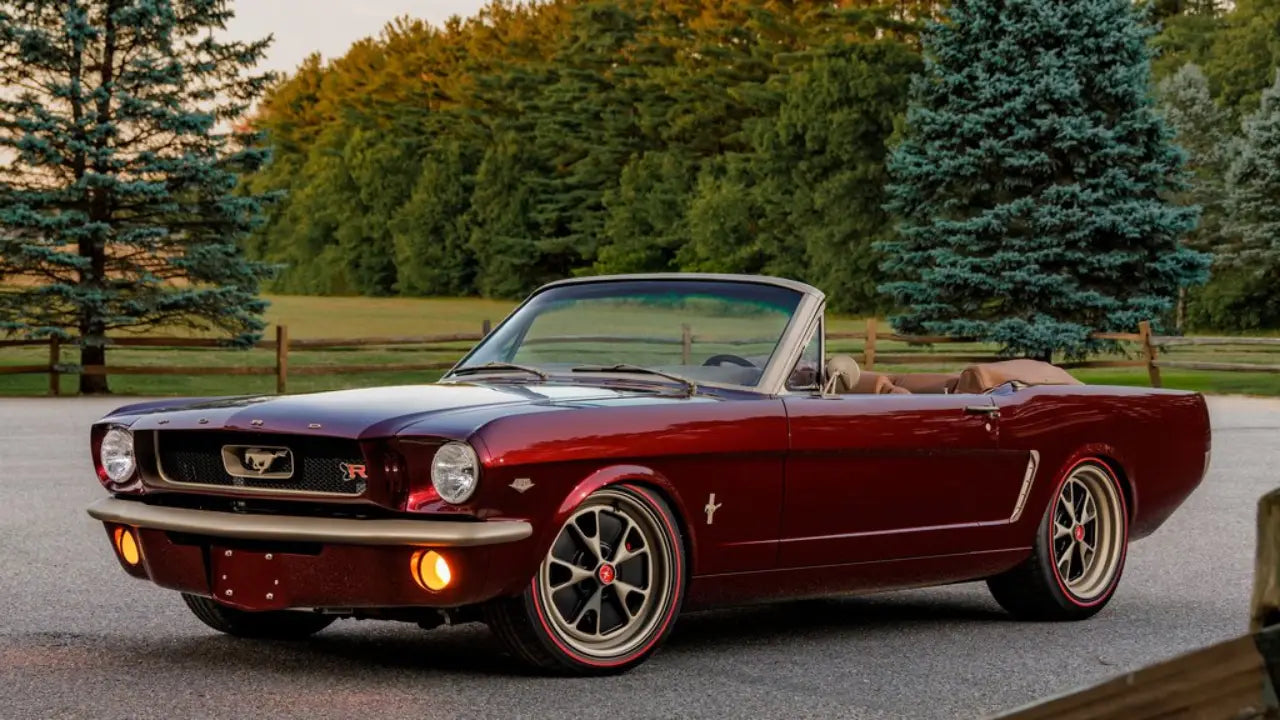
1966 Volvo P1800 Restomod
The 1966 Volvo P1800 restomod has a custom-tuned, turbocharged engine blending power and efficiency and delivering approximately 200 and 300 horsepower. It is also upgraded with an advanced suspension and braking system, offering unparalleled road performance and handling. On the other hand, the P1800 restomod is equipped with an iconic grille, alloy wheels, and aerodynamic enhancements while paying special attention to the original model’s timeless lines and elegant proportions.

1969 Chevrolet Camaro Restomod
The 1969 Chevrolet Camaro restomod is a masterpiece of restomodding, which takes the timeless design of the 1969 Chevrolet Camaro and infuses it with modern performance and technology. Underneath its classic exterior lies a modern chassis meticulously designed to provide superior handling and stability. The Camaro restomod is powered by a supercharged LS3 V8 engine. The exterior features custom bodywork, including widened fenders and a sculpted hood, which gives the Camaro restomod a more aggressive stance without compromising its iconic silhouette.
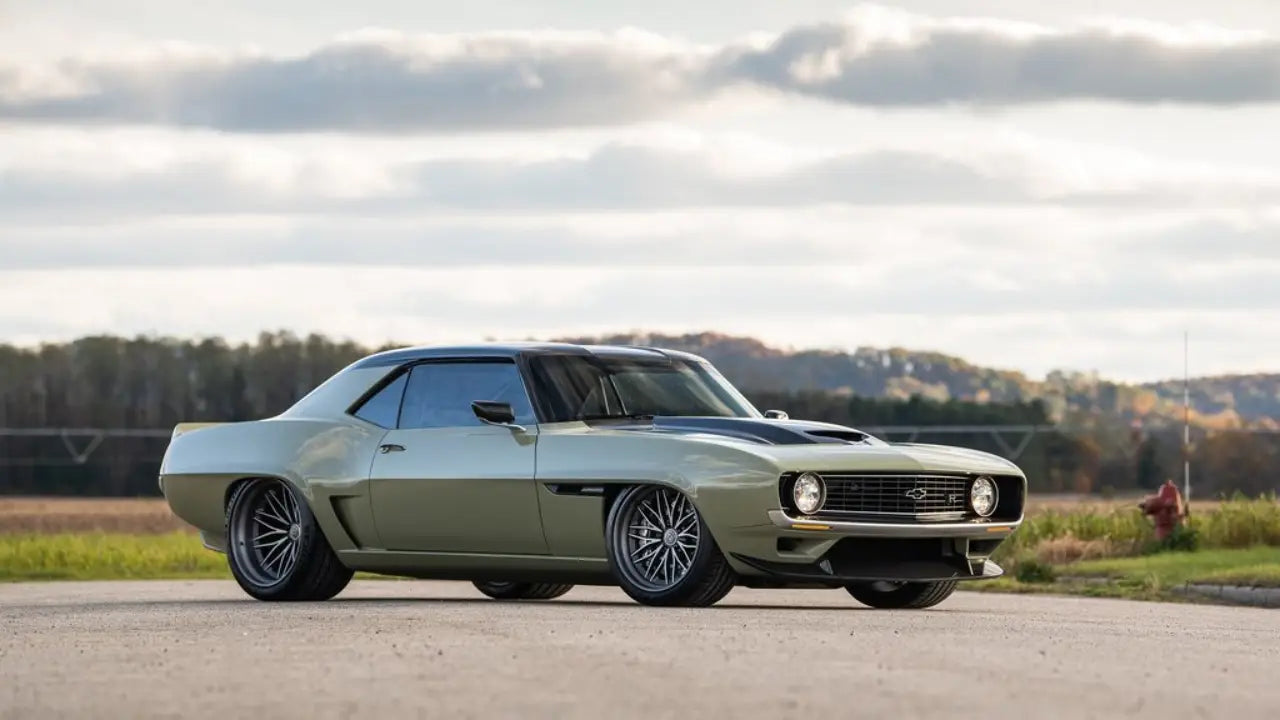
1969 Dodge Charger Restomod
The Dodge Charger restomod takes the classic styling of the original American muscle car and brings it into the modern era with upgraded engines, transmissions, suspension systems, brakes, and custom interiors. It is powered by a modern Hemi V8 engine, delivering exhilarating power and torque while maintaining drivability and efficiency. Also, the exterior of the Charger features custom bodywork and aerodynamic enhancements, which gives the Charger a menacing presence on the road while still paying homage to its iconic heritage.

1971 Plymouth Barracuda Restomod
The 1971 Plymouth Barracuda restomod surpasses modern standards while paying homage to its iconic heritage. Under the hood, it is powered by a V8 engine, upgraded suspension components, and a reinforced chassis, which offer enhanced performance, handling, and control. Moreover, the Barracuda restomod preserves the muscular profile and assertive stance. From its iconic grille to its sculpted body lines, the Barracuda restomod's exterior retains its predecessor's timeless allure while including contemporary refinements.
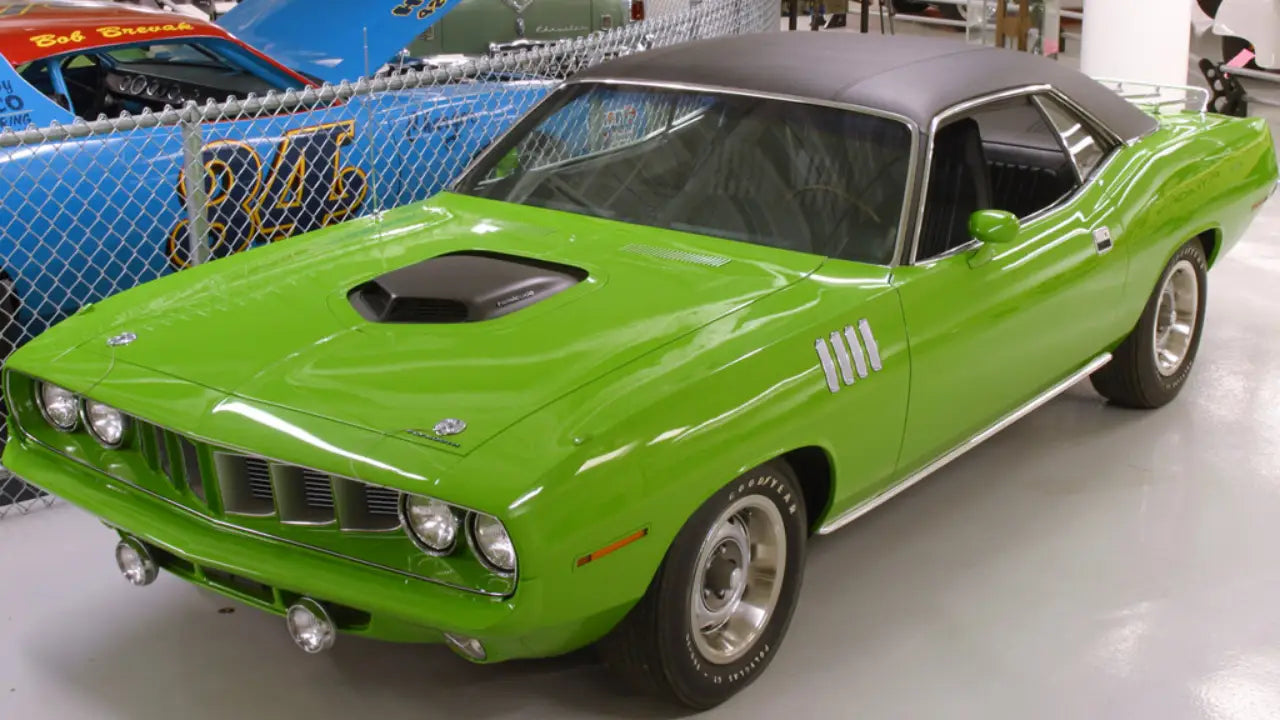
1971 Jaguar E-Type Restomod
Whether propelled by the refined purr of an inline-six or V8 engine, the E-Type restomod boasts an impressive power output. Upgraded suspension components, advanced braking systems, and modern chassis enhancements of the E-Type Restomod work harmoniously and deliver an unparalleled driving experience by offering confidence-inspiring control and agility that elevates every twist and turn of the road. Also, it combines classic charm with modern touches on the exterior and interior.

Are Aftermarket Parts Classified as Restomods?
Aftermarket parts, components manufactured by third-party companies rather than the original equipment manufacturer (OEM), are often utilized in Restomod builds to achieve specific customization goals. Aftermarket parts can be used in restomod projects, but not all aftermarket parts necessarily classify a vehicle as a Restomod.
As restomod typically involves a combination of restoring a classic or vintage vehicle to its original appearance while incorporating modern upgrades to enhance performance, comfort, and usability, aftermarket parts used in restomod should respect the original appearance of the classic or vintage car while upgrading its performance, usability, and comfort.
What are Popular Aftermarket Parts for Restomod?
As we mentioned, some aftermarket parts are suitable for restomod while other aftermarket parts, especially for changing the appearance of vintage or classic cars, are not used in restomod. Now, let’s talk about the most popular aftermarket parts for restomod below:

Body Kits
One of the most popular aftermarket parts for restomod projects is body kits which allow for personal customization while maintaining the classic look of the vehicle. A body kit can seamlessly blend vintage style with contemporary performance and aesthetics by incorporating modern design elements such as aerodynamic enhancements, custom grilles, and updated body panels. So, body kits enhance the visual appeal and overall functionality of vintage cars.
High-Performance Crate Engines
As the heart of the restomod project, these engines are specially designed to fit into vintage car frames while delivering significant performance upgrades over original powerplants. High-performance crate engines often feature advanced technologies like fuel injection, lightweight aluminum heads, high-flow intake manifolds, and high-performance camshafts to generate increased horsepower and torque. So, by installing a crate engine, restomod enthusiasts can retain the classic aesthetics of their vehicle while enjoying the benefits of modern engine technology.
Suspension System
One of the most necessary aftermarket parts for restomod is a suspension system, which improves the handling characteristics and ride quality of the vehicle. Upgrading the suspension involves a comprehensive overhaul of components such as shocks, springs, sway bars, control arms, and bushing to achieve superior performance and dynamics. Whether cruising along winding roads or tearing up the track, a well-engineered suspension system is essential for maximizing the driving experience and extracting the full potential of a restomoded classic car.
Air Conditioning Kit
The air conditioning kit is a transformative upgrade for classic car enthusiasts embarking on a restomod journey, providing modern comfort and convenience without compromising the vehicle’s nostalgic charm. It includes compressors, contenders, evaporators, hoses, and controls specially designed to integrate seamlessly into vintage car interiors. Restomodders can enjoy comfortable cabin temperatures during hot summer days, long road trips, or daily commutes, enhancing the overall driving experience by installing an air conditioning kit.
Seats and Upholstery
Modern seats offer superior ergonomics, support, adjustability, and advanced features such as heating and cooling functions. When it comes to upholstery, restomodders have a wide range of high-quality materials and finishes to choose from, including premium leather, suede, alcantara, and custom fabrics. These materials elevate the interior’s appearance and provide enhanced durability and longevity, which ensures that the classic or vintage car’s cabin remains stylish, modern, and inviting for years to come.
Custom Gauges
Custom gauges serve as functional instruments and aesthetic focal points in restomodded classic cars, offering accurate readings and personalized styling options. Digital readouts, customizable lighting, and integrated warning indicators are just a few of the features available in custom gauge clusters, which allows restomod enthusiasts to tailor their vintage vehicle’s cockpit to their preferences. Whether aiming for a vintage-inspired cockpit or a futuristic display of technology, custom gauges offer endless possibilities for personalization and customization in restomod projects.
High-Performance Brakes
Upgrading to high-performance brake systems is essential for ensuring safety and control in restomod projects, especially when increasing engine power. These brake systems typically include larger rotors, upgraded calipers, and high-performance brake pads and lines. By improving braking performance, restomodders can reduce stopping distances and prevent brake fade during aggressive driving, enhancing both safety and performance.
Fuel Injection System
Electronic fuel injection replaces outdated carburetors with sophisticated computer-controlled systems that precisely meter fuel and adjust air-fuel ratios in real time. It results in better throttle response, smoother acceleration, and enhanced fuel economy compared to traditional carbureted setups. Whether cruising on the open road or tearing up the track, a well-tuned injection system is essential for unlocking the full potential of a restomodded classic car while maintaining its vintage appeal and character.
High-Performance Exhaust Headers
High-performance exhaust headers feature mandrel-bent tubing, larger primary tubes, and optimized designs that reduce backpressure and improve exhaust gas scavenging, increasing horsepower, torque, and overall performance. Restomodders can achieve a deeper, more aggressive exhaust note by replacing restrictive factory exhaust manifolds with high-performance headers, signaling the vehicle’s enhanced performance capabilities to onlookers and bystanders alike. So, these headers are a valuable addition to any well-executed restomod project.
Transmission Conversion Kit
Upgrading the transmission in a restomod project is a transformative aftermarket part. Transmission conversion kits allow enthusiasts to replace outdated manual or automatic transmissions with modern units like overdrive, lock-up torque converters, and electronic shift control. So this results in improved fuel efficiency, reduced engine RPMs at cruising speeds, and enhanced highway drivability for a restomod car.
Throttle Response Controller
One of the most practical and reliable aftermarket parts for restomod projects is throttle response controllers. A throttle response controller improves the responsiveness of the vehicle's throttle input by reducing the delay between pressing the accelerator pedal and the engine's response. But, as you know, the practicality and reliability of throttle response controllers vary from brand to brand. So, keep reading to learn the best throttle response controller for restomod projects.
Explore How Pedal Commander® Upgrades Vintage Cars for Today’s Roads
IFor restomod projects, Pedal Commander® is the most practical and reliable performance part that bridges the gap between nostalgia and contemporary performance. As vintage car enthusiasts navigate the ever-evolving landscape of modern roads, Pedal Commander® hold the key to unlocking the full potential of classic rides while ensuring they remain relevant in today's fast-paced world.
How? Pedal Commander® is designed to eliminate the throttle lag from the accelerator pedal. While Pedal Commander® modernizes throttle response, it does not compromise the classic charm of vintage cars. Unlike more invasive modifications, Pedal Commander® is a plug-and-play device that can be easily installed in 10-15 minutes without altering the vehicle's originality.

Moreover, Pedal Commander® has four distinctive driving modes – ECO, City, Sport, and Sport+, which significantly contribute to its versatility in adapting to different road conditions. So, Pedal Commander® allows restomod enthusiasts to upgrade their cars with unparalleled precision and advanced throttle versatility.





